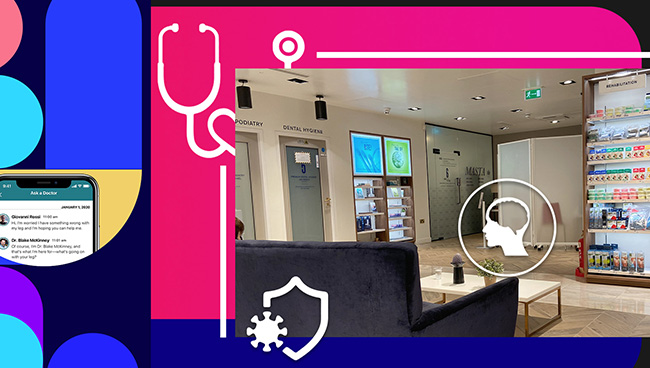During the pandemic, shoppers started turning to retail health clinics to meet rising demand for quick-and-easy WELLness services. Now, their retail expectations have evolved to include convenient health care treatment. This is especially opportunistic for retail clinics and pharmacies, but is the store missing the script?
Are You Treating Your Shoppers to the WELLness They Want?
Our How America Shops® micro-report, “The Immediate Opportunity: WELLness and Treatment,” explores shopper expectations for quick, easy and reputable wellness services, post-pandemic. One sales opportunity in particular is treatment as a service, in retail health clinics and retail pharmacies.
As we’ve known, the pandemic has raised shoppers’ awareness of staying well, and they are dedicating more time, money and attention to self-care. Nearly all shoppers in our study, 94%, told us they know more about staying well today than they did two years ago.
This knowledge may be benefiting retailers, as shoppers are now open to receiving more advanced health treatments in retail settings – beyond blood pressure screenings and Covid tests. In-store pharmacies and retail health clinics are especially poised to benefit, whether they’re in a drug store, grocery chain or mass merchant.
Let’s set the context.
- Retail health clinics and medical clinics are tied for the number of people who visit them for vaccines. One-third of shoppers said they now go to retail pharmacies (and traditional health clinics) for vaccines for flu and Covid, but also tetanus, shingles and pneumonia. This is up from two years ago.
- One in five shoppers now trust retail health clinics for more complex procedures, including blood infusions, X-rays, MRIs and even dialysis, but more – nearly one-third – prefer urgent care clinics for these procedures.
- More than one-third of shoppers will consult a pharmacist for well care – across all generations.
- Rapidly expanding online pharmacies are capturing mostly Millennials, who like the 24/7 access for a prescription or advice.
Prognosis: The Market is Ripe for Retail Health Treatment
Retailers can play a bigger role in shoppers’ WELLness trip– if they act now. Here are our tips for including WELLness as a promise in store, and using it promotionally to win a greater share of wallet.
Learn the different wellness mindsets.
Millennials, more than other generations, are least reliant on traditional sources (like medical doctors) for health care and they are more connected on social media. Earn their confidence, because they have plenty of their own.
Attract shoppers with information.
Since the pandemic, 30% of shoppers have changed where they go for wellness information, with Gen Z and Millennials more likely to have done so (15 percentage points and 10 percentage points higher than the total population, respectively).
Plumb the category opportunities:
The health categories shoppers want to learn most about include memory, immunity, nutrition, sleep and digestive health. But we also see evidence of more interest in niche categories including allergies, sexual health, childcare, detoxing and Covid recovery.
Make it easy everywhere.
Regardless of the wellness or treatment options shoppers seek, and whether they come via a retail pharmacist or a clinic, shoppers want it quick and easy. If you do not offer convenient healthcare treatment, they will simply find it somewhere else.
WSL continuously surveys thousands shoppers across the country to keep pulse of shifting preferences, sentiments and concerns. To read our latest How America Shops® WELLness report, visit us here. You also can listen to our recent Future Shop podcast with Tim Girvin, “Branding Wellness. The New Dynamics”.


